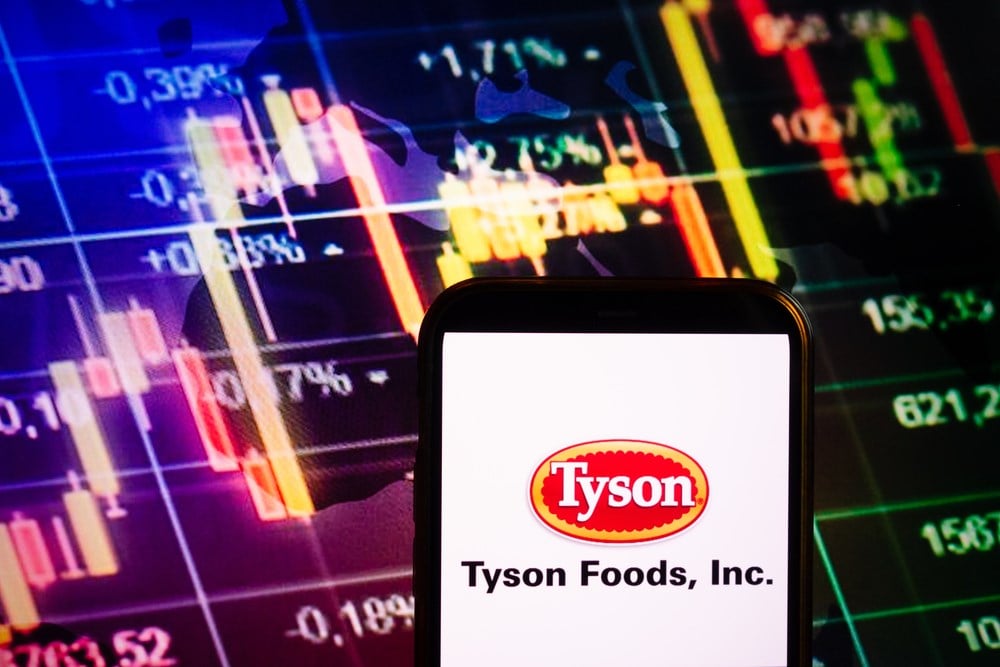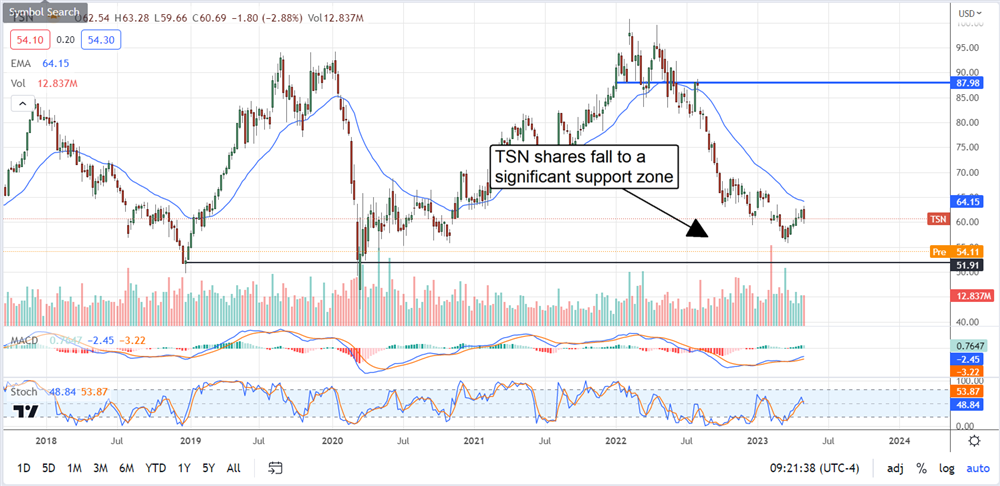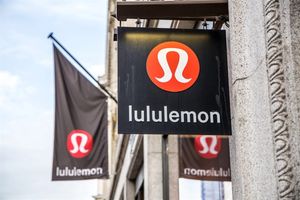
Current holders of Tyson Foods (NYSE: TSN) may be trimming their positions, but those looking to build a position in a healthy consumer staples stock with a sector-beating yield might want to put it on their watchlists. Headwinds within the meat industry cut into the Q2 results and led to reduced guidance that has shares moving lower, but there is only so far the stock can fall. This market has been trending lower for nearly a year on a declining outlook and may have reached a point of capitulation.
What that means for the stock is that the price is getting cheaper while the yield increases, but these price points won’t last long. The stock was already paying out more than 3%, so the 10% post-release decline in share prices will significantly impact the numbers. The move also puts the stock just above rock bottom and at levels income investors, bottom-seekers and value-investors may find interesting.
"While the current protein market is challenging, we have a strong growth strategy in place and are bullish on our long-term outlook,” said Donnie King, president and CEO of Tyson Foods. “We saw strong performance in our branded foods business and continue to be laser-focused on meeting customer needs and planning the future with them.”
Tyson Foods Has Rough Quarter
Tyson Foods had a mixed quarter showing volume growth where most other staples companies are not, but also pricing decreases and rising costs to offset the strength. The company posted $13.13 billion in net revenue for a gain of 0.1% compared to last year due to a 3.3% increase in volume and a -2.2% decline in pricing. The revenue missed consensus on volume weakness, and lower realized prices. Volume gains were led by International, Chicken and Pork, which grew by 8%, 64%, and 1.1%, while Pork and Beef led the pricing declines at -10% and -5.4%.
The margin is mixed and also fell short of the consensus. The GAAP operating loss came in at $49 million and down 104% YOY, while the adjusted operating margin was positive at 0.4% but still down 94% YOY. This left adjusted earnings at -$0.04 and $0.84 short of the consensus, and it came with weakened guidance.
The company doesn’t give specific guidance on earnings, but it lowered its forecast for full-year revenue to range from $53 to $54 billion compared to the $55 billion Marketbeat.com consensus figure. This is coupled with flat to negative margins in most operating segments, with only Prepared Foods expected to grow substantially. This is not surprising given the strength of other packaged food names like General Mills (NYSE: GIS), PepsiCo (NASDAQ: PEP), and Kraft Heinz (NASDAQ: KHC), which trade at higher valuations while paying similar to lesser yields.
Tyson Capital Returns, Are They Safe?
Tyson’s capital returns are safe enough for now. Still, there is a risk that the distribution growth could slow or stop or that the payment/share repurchases will be halted if there is no improvement in profitability. The company still has over $2.2 billion in liquidity, including over $540 million in cash, although cash is down YOY. Steady assets, liabilities and debt offset that, but the debt will likely rise over the next few quarters.
The chart shows this market is near significant support levels that should be expected to produce a bounce, if not a bottom and reversal. These levels are consistent with pre-pandemic and pandemic lows, which have produced significant upswings in market action 6 times since 2016. If this level fails now, the stock could be in for a much more significant decline, but that is not expected.







